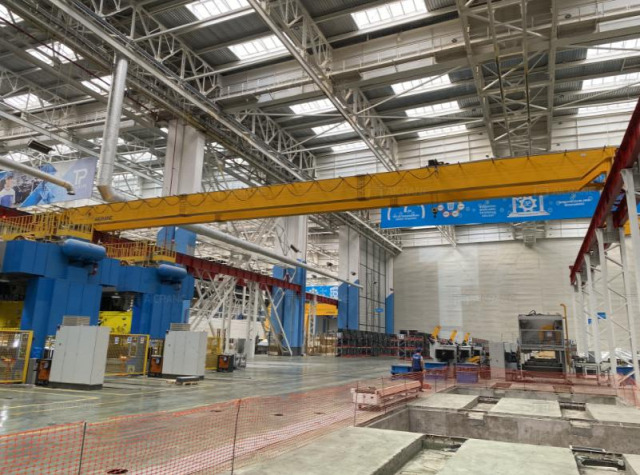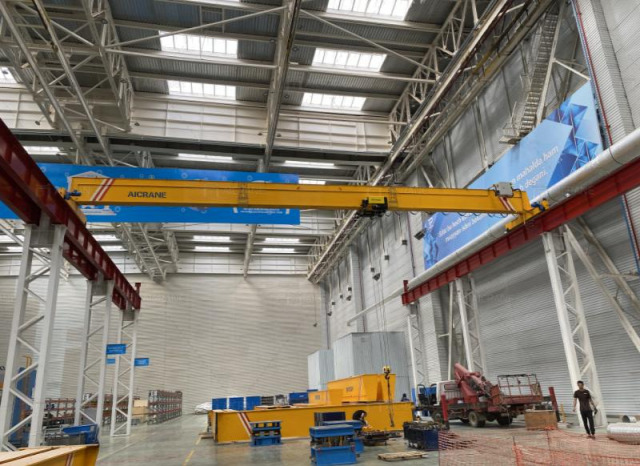Bridge cranes are vital in various industrial settings, facilitating the lifting and movement of heavy loads. Among the most common types are single girder and double girder bridge cranes. Understanding the differences between these two configurations is crucial for selecting the right crane for your specific needs.

Design and Structure
-
Single Girder Bridge Cranes
A single girder bridge crane features one main beam (the girder) supported by two end trucks. This design allows for a lightweight structure, making it ideal for lighter loads and shorter spans. The simplicity of the design contributes to easier installation and maintenance. -
Double Girder Bridge Cranes
In contrast, double girder bridge cranes consist of two main girders that provide a more robust structure. This design allows for higher lifting capacities and greater spans. The additional girder also enables the use of larger hoists, enhancing operational flexibility.
Load Capacity
-
Single Girder
Generally, single girder cranes are suitable for capacities ranging from 1 ton to about 20 tons. They are best suited for lighter lifting tasks where the maximum load does not exceed their limits. -
Double Girder
Double girder cranes can handle heavier loads, typically ranging from 5 tons up to 100 tons or more. Their design provides the strength necessary for industrial applications that require lifting heavy materials, making them the ultimate choice for heavy-duty operations.

Span and Headroom
-
Span Requirements
Single girder cranes are usually limited in their span capabilities, often best for shorter spans (up to 25 meters). This limitation is primarily due to the single beam structure, which can lead to sagging under heavier loads. -
Double Girder
Double girder cranes can achieve longer spans, often exceeding 30 meters, without compromising structural integrity. This feature makes them suitable for large facilities where wider coverage is essential. -
Headroom
Single girder cranes typically have a lower profile, which is advantageous in facilities with height restrictions. Double girder cranes, while providing greater lifting capacity, usually require more headroom due to their design.
Cost Considerations
-
Initial Investment
Single girder cranes are generally less expensive to manufacture and install. The simpler design of single girder bridge crane results in lower material and labor costs, making them an attractive option for budget-conscious operations. -
Long-term Costs
Although double girder cranes come with a higher upfront cost, their durability and higher lifting capacities can lead to lower operating costs in heavy-duty applications. When considering the total cost of ownership, double girders may provide better value in high-utilization environments.
Maintenance and Operation
-
Ease of Maintenance
Single girder cranes, with their simpler design, often require less maintenance. Fewer components mean there are fewer points of potential failure, making troubleshooting more straightforward. -
Operational Complexity
Double girder cranes, while providing enhanced capabilities, may require more intricate maintenance due to their complex design. However, their robust construction often leads to greater reliability in demanding environments.
Applications
-
Single Girder Applications
These cranes are typically found in smaller workshops, warehouses, and manufacturing facilities. They are perfect for applications such as assembly lines, small parts handling, and light manufacturing. -
Double Girder Applications
Due to their capacity and span advantages, double girder cranes are commonly used in large manufacturing plants, steel mills, and construction sites. They are ideal for heavy material handling, such as lifting large machinery, steel beams, and heavy containers.
Safety Features
-
Load Stability
Single girder cranes can experience more sway when lifting loads, which may pose a safety risk in certain environments. However, modern designs often include anti-sway systems to enhance stability. -
Structural Integrity
Double girder cranes, with their two-girder system, generally provide enhanced load stability and safety. Their structure can accommodate various safety features, including overload protection and emergency stops, making them safer for heavy-duty applications.
Conclusion
Choosing between a single girder and a double girder bridge crane depends on several factors, including load capacity, span requirements, budget, and specific application needs. Single girder cranes excel in lighter applications with lower costs, while double girder cranes offer superior lifting capabilities and versatility for heavier, industrial uses. Ultimately, understanding these differences will enable operators to make informed decisions that enhance productivity and safety in their operations.

